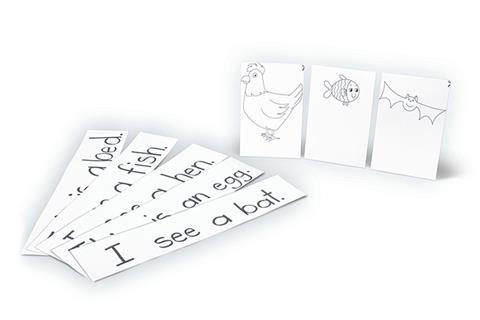Choosing the correct article - “a” “an” “the” or Ø (zero article) – is, for many students, an ongoing problem all the way from beginner to advanced classes. Here are a few quick ideas for practising them at lower levels.

- Basic familiarization
- When you introduce new vocabulary, don’t just say or write the words in isolation – always include “a” or “an” with countable nouns e.g. instead of egg write up an egg.
- Flashcard drills
If you drill vocabulary by holding up flashcard pictures for students to name, always ask them to include an article where appropriate e.g. “a table” rather than just “table”. Drill countable / uncountable nouns by showing cards quickly and making sure students choose correctly e.g. “an orange” / “some rice”. Also practise with words that can be either countable or uncountable e.g. “a coffee” (a picture of a cup) / “some coffee” (a picture of ground coffee). - Noticing weak “a” and “an”
Include receptive exercises as well as ones that ask learners to produce language. Prepare a short story with a number of articles in it (e.g. “Peter walked into a department store. He wanted to buy a present for his girlfriend ... “ etc ). Write all the nouns (e.g. Peter, department store, present, girlfriend etc) in a vertical list down the board and ask students to copy them. Read the story aloud once at normal speed. Students must try to write down any articles they hear in front of the nouns. Ask students to compare after this single reading. They will probably miss some – “a” is a very short, weak word! Then read the text again for students to check. - Pointing and not pointing
Place some real objects (e.g. cups, pens etc.) around the room. Get students to drill two simple contrasting sentences e.g. “Could you pass me the cup, please?” and “Could you pass me a cup, please?” Whenever they say “the” they must point at the specific object they want. When they use “a” they lift both hands in a general “asking” gesture. The listener now gives them what they asked for (i.e. either a specific cup or any cup). This student then makes a new request. (NB objects will move around the room a lot!) - A > The
In conversations we often use “a/an” the first time we ask about something, but “the” when it comes up again. Prepare a communication game. Put the students into pairs. In each pair, students will have a set of simple pictures which they mustn’t show each other. Some pictures are the same as their partner’s, some are of the same objects but a different colour or size and just a few are not on the other sheet. Write up an example dialogue e.g. A: “Do you have a house on your handout?” B: “Yes, I do.” C: “Is the house red?” Make sure students notice the change of article. Students now talk in pairs, trying to find out what is similar or different between their handouts.


No comments yet